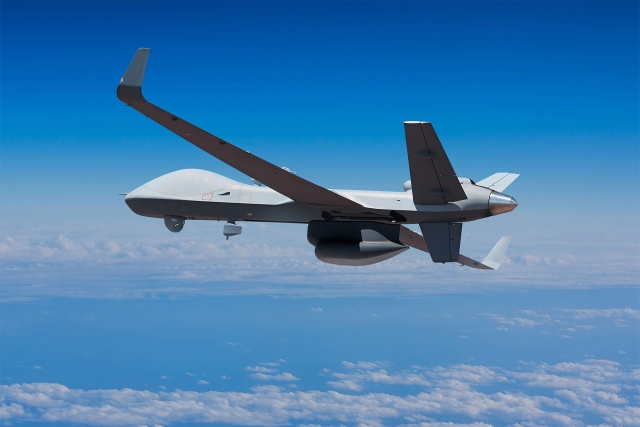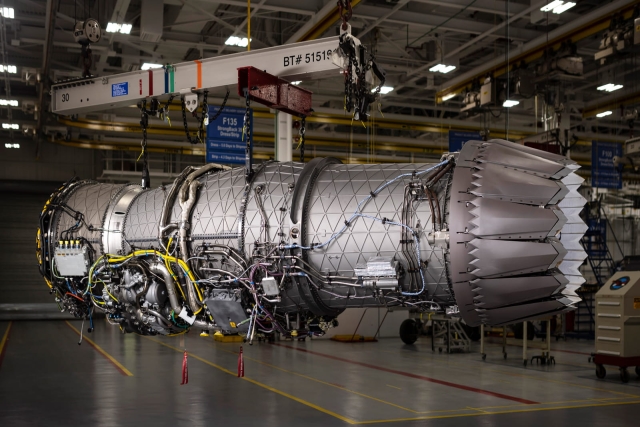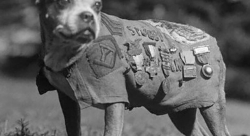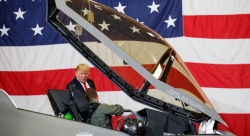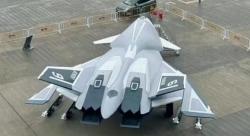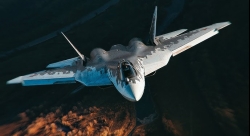Flying Wedge Unveils India’s First AI-Powered MALE Combat Aircraft, Secures $30M Export from South Asia
FWD Kaala Bhairav promises 30-hour endurance, 3,000 km range, and indigenous autonomy at one-tenth the cost of Predator-class UAVs

Flying Wedge Defence & Aerospace (FWDA) announced the readiness of India’s first indigenous, AI-powered Medium Altitude Long Endurance (MALE) combat aircraft, the FWD Kaal Bhairav, in Bengaluru on Friday.
The aircraft, designed and manufactured entirely in India, can operate for up to 30 hours and cover a range of 3,000 km. It is capable of multi-angle precision strikes, swarm warfare operations, and provides intelligence, surveillance, and reconnaissance (ISR) redundancy, offering a scalable alternative to high-cost foreign UAVs.
FWDA also revealed that Kaal Bhairav has secured a $25 million export order from a mystery South Asian nation, part of a broader $30 million strategic deal.
The aircraft ensures 100% sovereign control, with no foreign kill-switch risks or external data routing. FWDA claimed that at one-tenth the cost of Predator-class UAVs, Kaal Bhairav delivers strategic resilience while maintaining operational independence.
Founder and CEO Suhas Tejaskanda said, “For decades, India relied on foreign systems like Predator and Israeli Searcher UAVs, but at high strategic costs, including embedded kill-switch vulnerabilities and sensitive flight data routed through external servers. With shifting global defence regulations, India cannot afford digital dependency during wartime.”
The company claimed that 10 Kaala Bhairavs can match the reconnaissance power of a single Predator UAV, making fleet deployment cheaper and far more resilient to losses. A Predator costs up to INR 1,000 crore ($115 million), yet the same money could field an entire Kaala Bhairav fleet—ensuring a single loss never cripples mission capability.
“The global geopolitical landscape is shifting fast. India’s strategic ties with the U.S. are at a turning point, and last year’s high-profile defence deal needs to be revisited,” Tejaskanda said.
India and the U.S. finalized a $3.5B deal in October 2024 for 31 MQ-9B armed UAVs, with 15 Sea Guardians for the Navy and eight Sky Guardians each for the Air Force and Army.
Kaal Bhairav is 80% indigenous and supports a fully in-house maintenance, repair, and overhaul ecosystem, enabling rapid turnaround, reduced lifecycle costs, and uninterrupted access to critical spares.
Specifications of Kaal Bhairav
- Configuration: Twin Boom
- Wingspan: 6.5 meters (tip to tip)
- Payload: 91 kg (EOIR sensors, missiles, laser-guided rockets, fuel)
- Endurance (ISR missions): 30 hours at MSL, 25 hours at 15,000 ft
- Endurance (Air strike missions): 11 hours at MSL, 9 hours at 15,000 ft
- Range: 3,000 km with SATCOM
- Line-of-sight (LOS) range: 150 km
- Ceiling: 20,000 ft above sea level
- Take-off & Landing: Short prepared runway required (STOL capable)
- Cruise Speed: 42 m/s at MSL, 52 m/s at 15,000 ft
- Maximum Speed: 80 m/s
- Load Factor: +3g / –1.5g
- Autonomy: AI-powered adaptive targeting, autonomous flight pathing, live combat decision-making
FWDA made history as the first Indian firm to secure DGCA type certification for an indigenous UAV and unveiled India’s first unmanned bomber, the FWD-200B, which completed its maiden flight on 3 September 2024.

